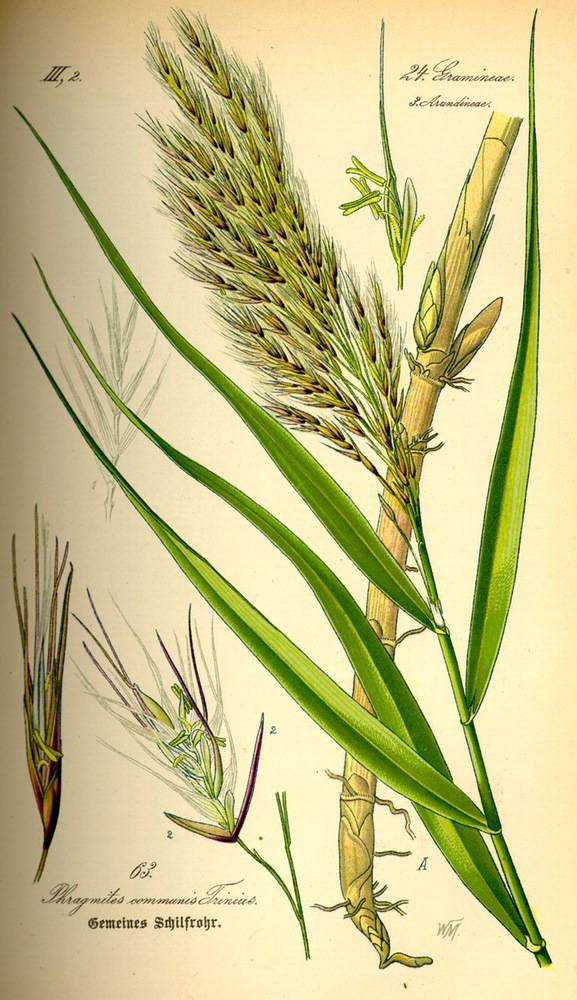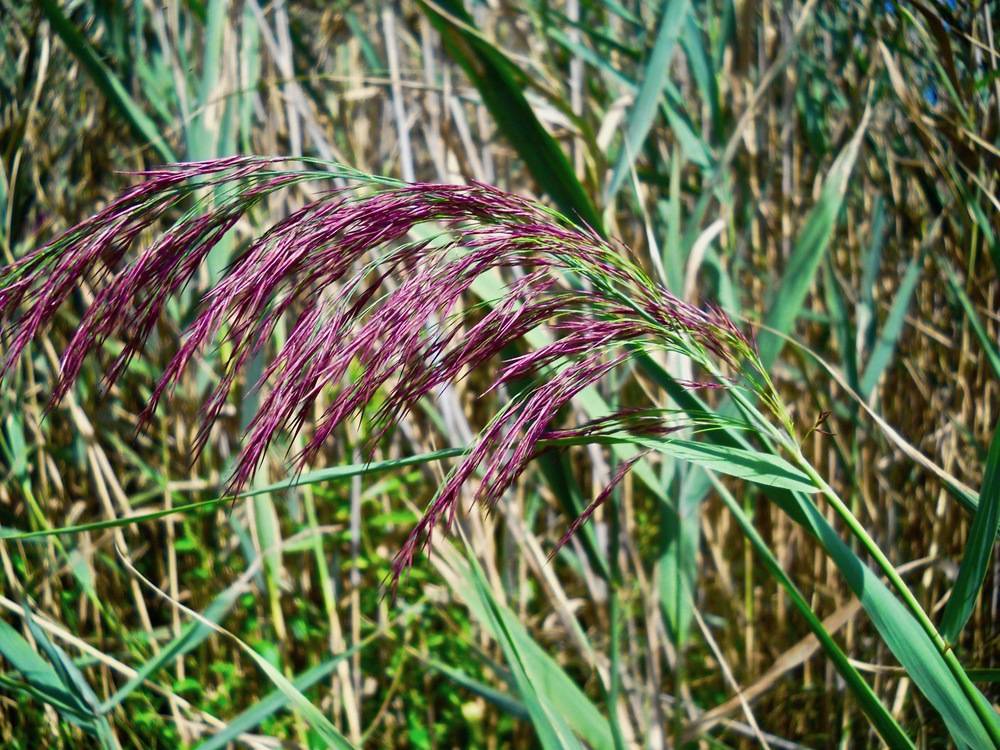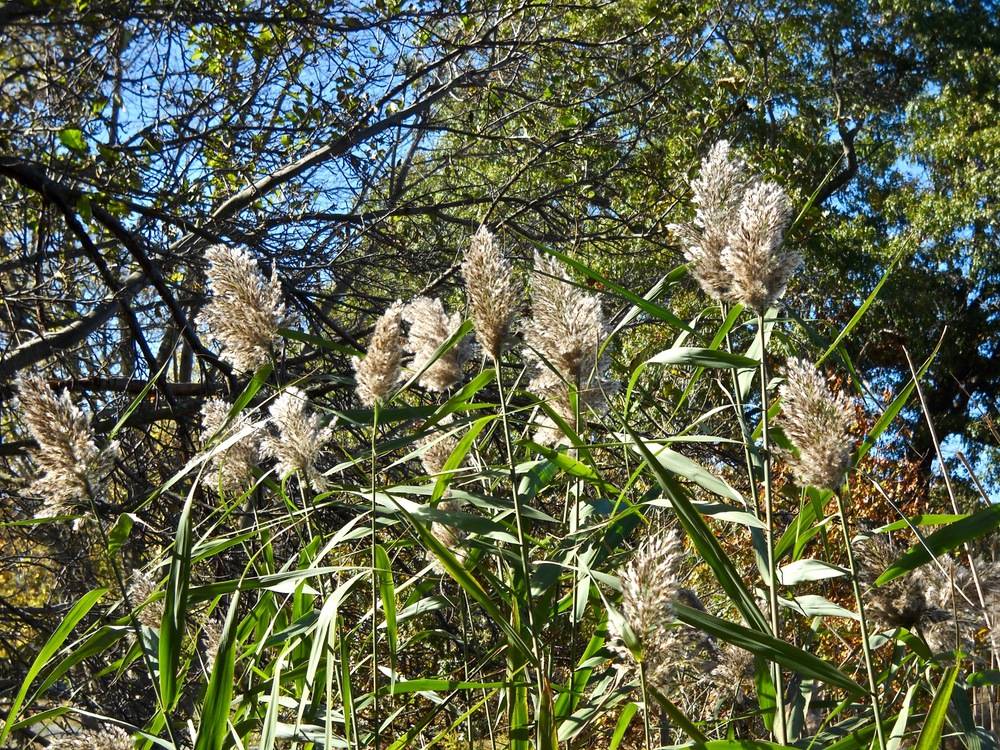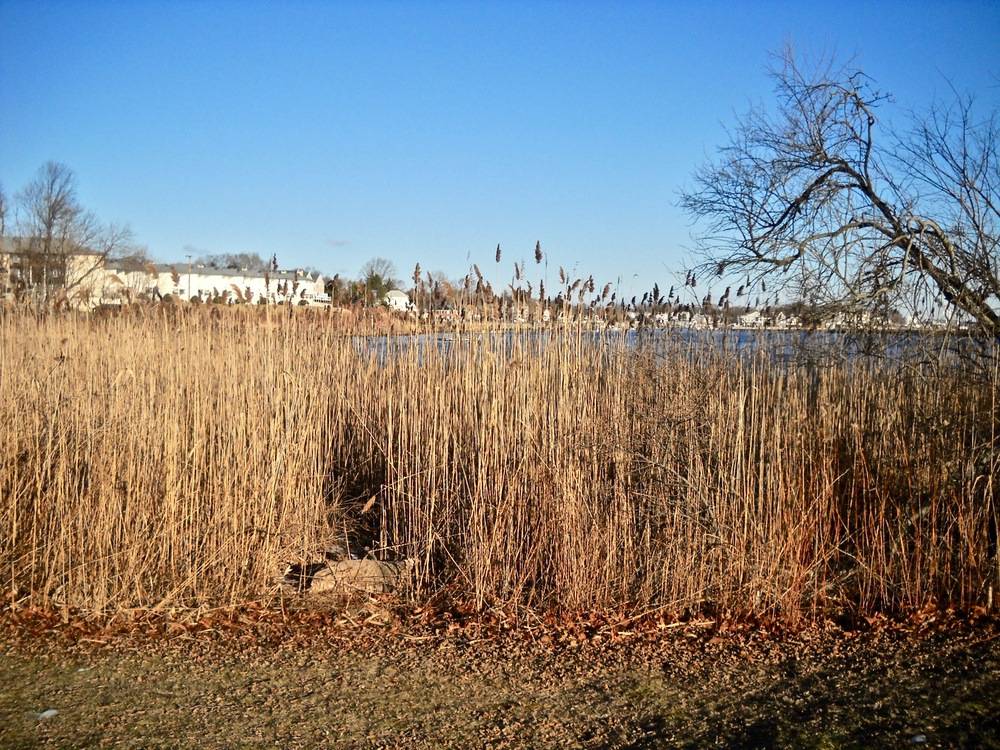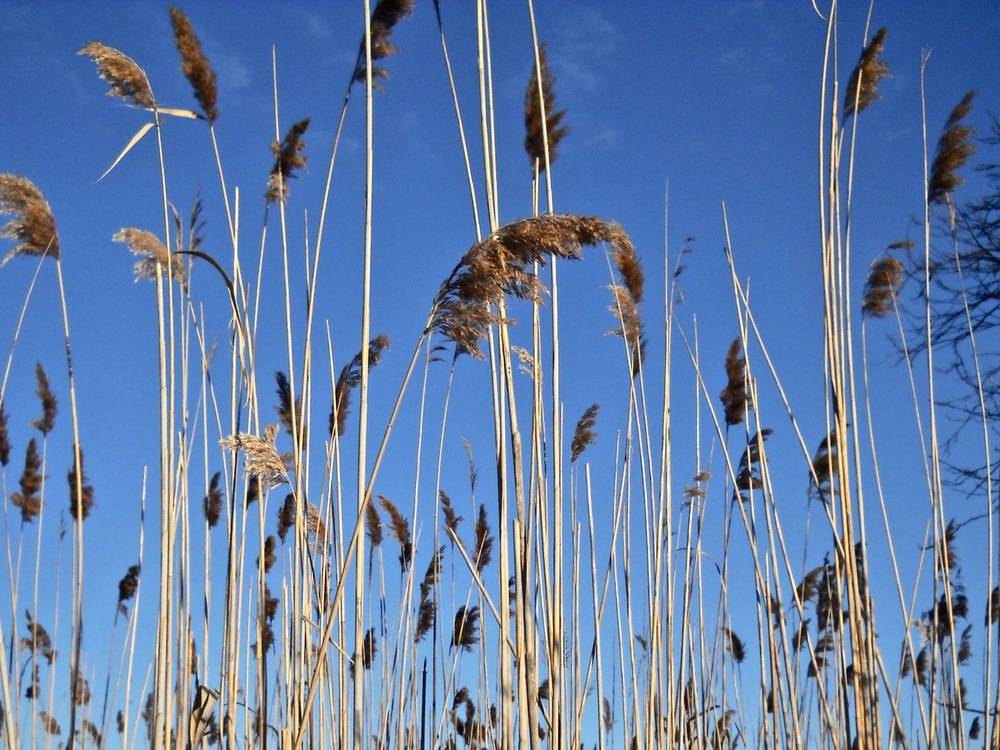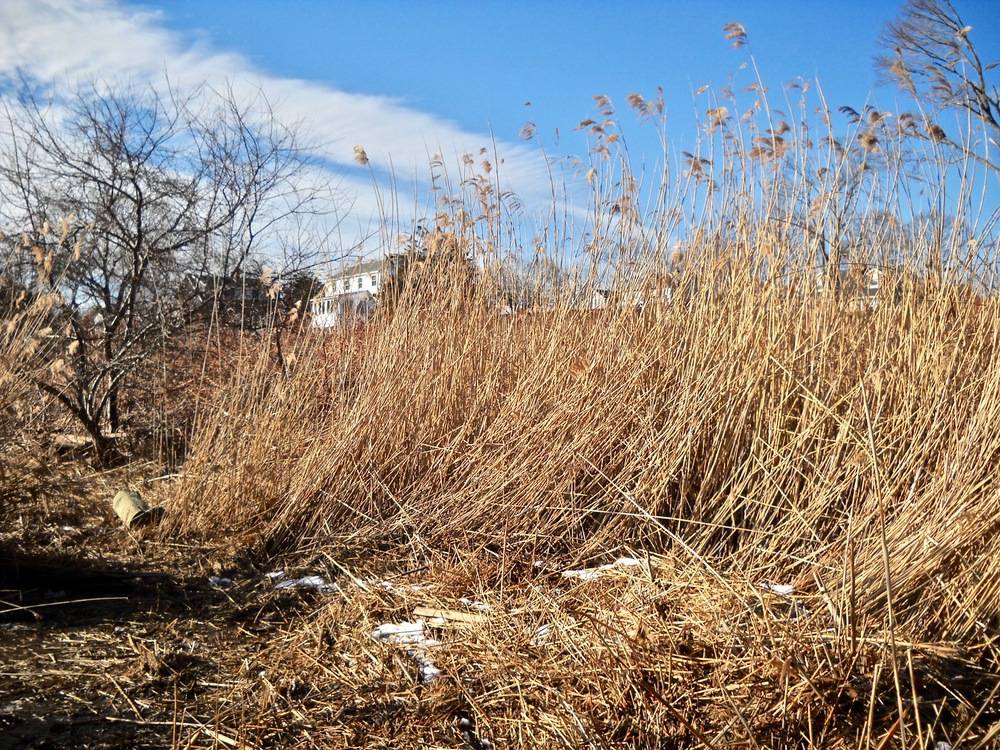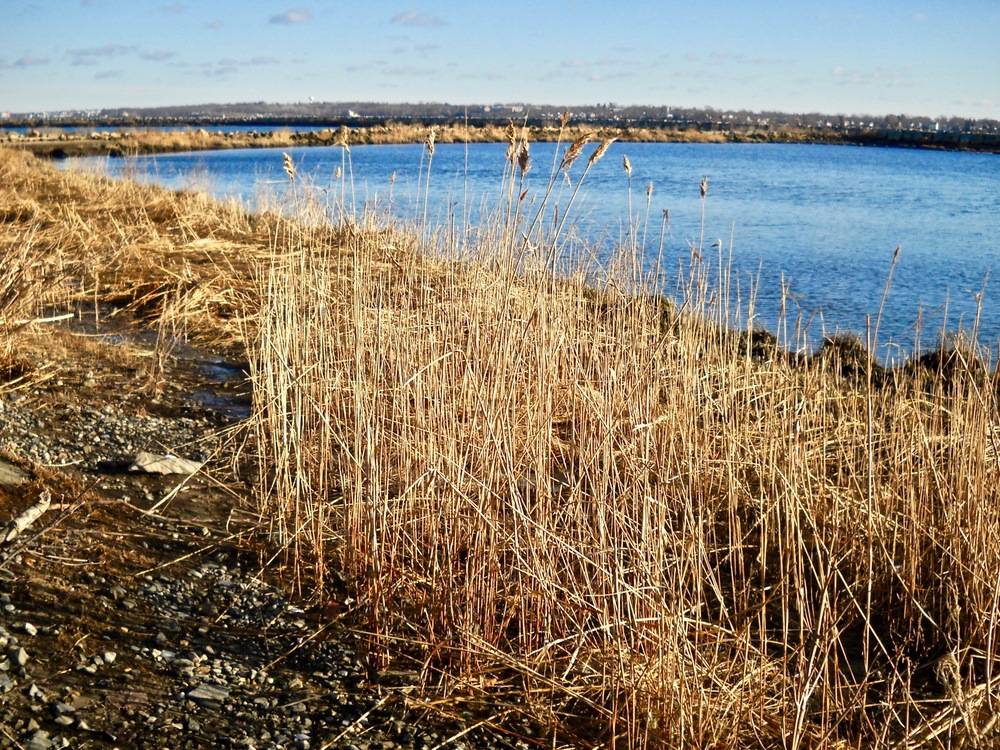common reed
Despite its name, the common reed is a grass. It is a wetland species that does best in freshwater environments but can tolerate brackish water. Recent studies of genetic material suggest that it is native to Eurasia and was first established near North American ports in the 1800's. Herbarium specimens documented that it was growing in areas where ship ballast was dumped. Since the American reed, Phragmites americanus, was already growing in this habitat, the very similar-looking common reed did not draw much attention. This all changed when coastal development created ideal habitats for the common reed. It has greatly expanded its range across North America within the last 100 years, even replacing the American reed in some localities, and is now considered one of the most invasive species around.
The stands of common reed at Salter Grove have not changed in size in recent years but will be monitored to limit their expansion. Their stem density and stem height appear related to the degree of tidal inundation. The sizable stands at the northern and southern ends of the park are dense and consist of stems well over ten feet in height. The soil at these two sites remain moist because of their downslope location and is rarely covered by brackish water. In contrast, a small stand that grows within the intertidal zone near Marsh Trail marker M3 is noticeably sparser, consists of relatively spindly stems, and produces fewer and smaller seedheads.
The common reed is very difficult to eliminate once it has rooted in place. Under favorable conditions, it is able to spread as much as 16 feet in a year by sending out horizontal runners. However, its growth is suppressed when it is regularly grazed by livestock. Volunteers at Simmons Mill Pond Managment Area near Adamsville RI, have applied this approach by repeatedly cutting undesired patches of common weed over a number of years and are nearing success in its eradication. However, the copious amounts of wind and water dispersed seeds provide a continuous source of new plants and these must always be eliminated as soon as possible to avoid establishment.
Within Eurasia the common reed was a pre-industrial source of food, medicine and building material. Young shoots were used like bamboo shoots and young roots replaced potatoes. Newly unfolding leaves were used as potherb, or dried and then made into a flour. Sugar was extracted from the stem and made into sweets and syrup. Different parts of the plant were used to prepare medicines for asthma, bronchitis, cholera, coughs, diarrhea, fever, food poisoning, sores, toothache, and urinary tract infections. The stems were used to produce baskets, fencing, mats, paper, and thatching. It was also planted to stabilize river banks because of its strong network of runners and roots.
Native Americans throughout North America made use of the common reed just as extensively. Quite possibly, some of the applications carried over from familiarity with the indigenous American reed. An ethnobotanical study listed 72 uses as food, medicine, and building materials. Besides coinciding with many of the traditional Eurasian uses, the stems were additionally made into arrow shafts, ceremonial and clothing accessories, musical instruments, rafts, and splints for broken limbs. The leaves were smoked with tobacco.
For more information:
https://gobotany.nativeplanttrust.org/species/phragmites/australis/
https://www.pnas.org/content/99/4/2445
http://www.florafinder.com/Species/Phragmites_australis.php
https://en.wikipedia.org/wiki/Phragmites_australis
https://www.invasive.org/alien/pubs/midatlantic/phau.htm
https://pfaf.org/user/Plant.aspx?LatinName=Phragmites+australis
http://naeb.brit.org/uses/search/?string=phragmites+australis

